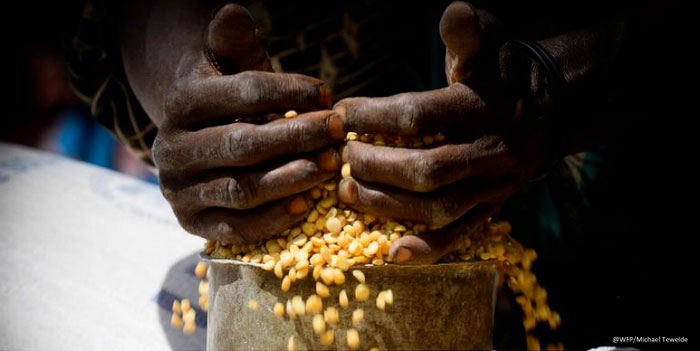
Food inflation in East African countries where tens of millions of people are caught in an alarming hunger crisis has increased sharply, reaching a staggering 44 per cent in Ethiopia – nearly five times the global average.
It is estimated that one person is dying every 48 seconds in Ethiopia, Kenya and Somalia alone, where the worst drought in decades is being exacerbated by the war in Ukraine and is pushing food prices to skyrocketing levels.
Against this backdrop, food billionaires have increased their collective wealth by $382bn since 2020. Less than two weeks’ worth of their wealth gains, would be more than enough to fund the entirety of the $6.2 billion UN appeal for East Africa, which is currently woefully funded at a mere 16 per cent.
“A monstrous amount of wealth is being captured at the top of our global food supply chains, meanwhile rising food prices contribute to a growing catastrophe which is leaving millions of people unable to feed themselves and their families. World leaders are sleepwalking into a humanitarian disaster,” Hanna Saarinen, Oxfam’s Food Policy Lead, said.
“We need to reimagine a new global food system to really end hunger; one that works for everyone. Governments can and must mobilize enough resources to prevent human suffering. One good option would be to tax the mega-rich who have seen their wealth soar to record levels during the past two years.
“This fundamentally broken global food system – one that is exploitative, extractive, poorly regulated and largely in the hands of big agribusinesses – is becoming unsustainable for people and the planet and is pushing millions in East Africa and worldwide to starvation.”
People in East Africa spend as much as 60 per cent of their income on food, and the region over-relies on imported staple food. For example, a new Statistics Canada report for May 2022, the price of food purchased from stores increased 9.7 per cent in Canada over the past year. While many people in affluent countries are struggling with the increased consumer prices, their counterparts in East African countries are facing hunger and destitution.
- In Somalia, maize prices were six times higher (78 per cent) than global prices (12.9 per cent) in May 2022 than they were 12 months before. In some regions, the minimum food basket expenditure has soared to over 160 per cent compared to last year. The cost of one kilo of sorghum – a staple food – was more than 240 per cent higher than the five-year average.
- In Ethiopia, food inflation soared by 43.9 per cent since last year. Cereals prices increased by 70 per cent in the year to May, more than double the global increase
- In Kenya, the price of maize flour, the main staple, has doubled in seven months and rose by 50 per cent in just a month (between June and July 2022). Rising food and energy prices will increase poverty by 2.5 percent, pushing about 1.4 million Kenyans into extreme poverty.
- In South Sudan cereals prices in May were triple their levels a year earlier, while the price of bread has doubled since last year. The average price of cereals has been higher than 30 per cent of the five-year average.
In Bundunbuto village, Puntland, Somalia, families’ purchasing power has been halved compared with two months ago, meaning when they used to buy 25kg of rice and sugar, now they can only buy 13.5kg per month.
In Somalia, where a “risk of famine” was recently declared, nearly half the population – over seven million people – face acute hunger, of whom 213,000 are at risk of famine.
Global food prices have hit a 50-year high and worldwide there are now 828 million people going hungry – 150 million more than at the start of the COVID pandemic. The Ukraine conflict has caused a huge spike in grain and energy prices but these have only worsened what was already an inflationary trend. This means, even when food is available, millions cannot afford to buy it.
Even within advanced economies like the US, the poorest 20 per cent of the population are forced to spend four times more on food than the wealthiest 20 per cent.
“Our broken global food system, and the inequality that underlies it, have wrought a war of attrition to millions of poor people who have lost their last purchasing power and can no longer afford to eat,” Saarinen said.
“To help those countries cope with rising food prices and the hunger crisis, rich nations must immediately cancel debt for those countries – which has doubled over the last decade – in order to enable them to free resources to deal with the skyrocketing hunger and to import needed grains. This money can and should be easily recovered by taxing the ultra-rich.”
To end the root causes of hunger, governments must better regulate food markets and ensure more flexible international trade rules in favour of the world’s most vulnerable consumers, workers and farmers. Governments and donors should support small-scale farmers who in Asia and sub-Saharan Africa provide more than 70 per cent of the food supply.
